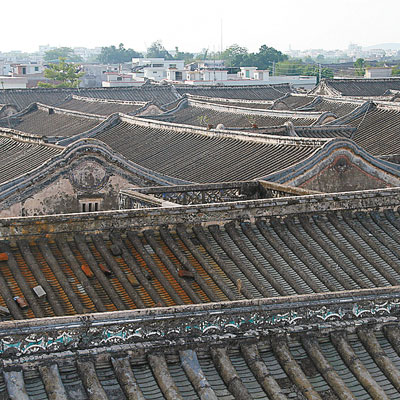
Moving down the checklist of weekend travel destinations in Guangdong finds the city of Shantou in the far eastern part of the province. A city of unique historical and cultural characteristics, as well as one of the most densely populated regions in China, there is plenty to see and do in and around Shantou.
The city is culturally unique as the home of the Chaozhou (Teochew) people, language, and culture (along with Chaozhou). Known for its tea customs, snacks, seafood and opera, Shantou boasts a special and distinct cultural heritage. As a sister city with Chaozhou, the two make up the region known as Chaoshan.
Shantou is historically unique with strong links to the outside world. This came about as the result of the Second Opium War after which Shantou was established as a treaty port for foreign trade in 1869. Following this, many Shantou residents emigrated overseas, particularly to Southeast Asia, where Chaozhou culture now has a strong presence. Johor Bahru, for instance, bordering Singapore in Malaysia, is known as “Little Shantou.”
Along with Shenzhen, Shantou was one of the four earliest special economic zones (SEZ) in China. However, the city has not prospered as much as other SEZs and this becomes quite evident during a visit. Regardless, Shantou is still richer than its neighbors, and most other cities in China for that matter.
My visit to Shantou initially took me to the district of Chenghai, which is more country than city. There I encountered the same stares, curiosity, and friendliness that can be found almost anywhere in the Chinese countryside. Bike rides through villages, sipping tea inside local homes, playing ball with village kids, picking guava fruit with farmers and more, made for a truly enjoyable experience.
If the Chaoshan area is famous for its tasty food — and numerous restaurants around Shenzhen attest to this — you will do even better by eating at the home of a local. My host family continually bombarded me with amazing home-cooked food which hasn’t been equaled anywhere in China yet. Hint: stay with a family.
One day my host took me to Chenghai’s Tashan Park. It featured a few standard attractions such as hills, lakes, temples, and pagodas. However, toward the end of our visit, I noticed a rare sight: a statue of Liu Shaoqi, China’s former president who suffered under the chaos of the “Cultural Revolution.” I thought nothing of it, and away we went, missing out on one of Shantou’s most unique attractions.
I had known earlier from scattered news reports online that Shantou had something that can’t be found anywhere else in China: a “Cultural Revolution” Museum, but little did I know it was right under my nose.
Founded by Shantou’s former mayor Peng Qian and funded by billionaire Li Ka-shing, the museum can be found inside a pagoda in Tashan Park. It features stone engravings, photographs and drawings from the era. Without much publicity, it’s not high on the radar, but reflects a new approach to history and the open nature of Shantou as a pioneer city in China.
Shantou is a city of quiet lanes and loud, busy boulevards. As with most cities in China, modernity coexists alongside tradition, both in the physical and spiritual. In the rush to develop and get rich following Shantou’s opening as an SEZ, history has not entirely been forgotten.
One place your “Lonely Planet” guidebook recommends is the old foreign concession and its 19th century European architecture. When I arrived, I wasn’t even sure I had arrived. What I expected to be similar to Shanghai’s Pudong was a square surrounded by a few buildings languishing in disrepair. What redeemed this disappointment was its location: in the charming, old part of the city, perfect for strolling and exploring.
The outskirts of the city showcase Shantou’s urban redevelopment plans with neat, homogenous apartment blocks, replacing traditional village homes, spaced between tiny green farm plots. It was certainly much more attractive than Shenzhen’s dense urban village development, demonstrating an attractive fusion of city and country.
Nan’ao Island in Shantou, which I didn’t visit, is referred to by China’s National Geographic as the “most beautiful island in Guangdong,” and along with the museum, will be on my checklist for the next visit, if there is one.
All in all, Shantou, like other cities in Guangdong, was well worth the time spent there. It’s hard to go wrong with any city or town in the province. However, if you are new to traveling in Guangdong and your time is limited, you might want to start out with other, more renowned cities such as Chaozhou or Meizhou. Unless you have a host family to stay with, that is.
(Shenzhen Daily April 15, 2008)